Identifying Stinging Insects: A Simple Guide to What Bit or Stung You
Wondering what bit or stung you? This guide helps you quickly identify the most common stinging insects, their bite or sting symptoms, and what you should do next.
If you’ve ever felt a sudden sting on your skin, you know the flood of questions that follows. What was that? Should I be worried? Most insect stings and bites are mild, but some can cause allergic reactions or even transmit diseases. Knowing which insect was responsible helps you manage your symptoms and decide when you need medical attention.
The Most Common Stinging Insects
Here are the most common types you’ll encounter—what they look like, where you’ll find them, and how their stings or bites show up on your body.
Bees
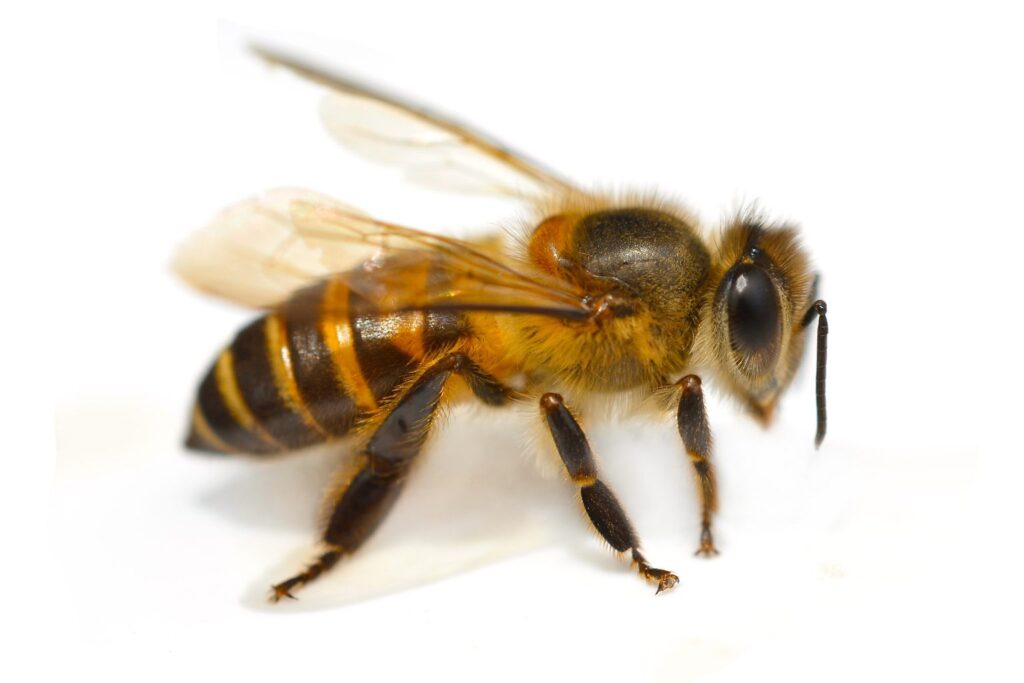
What They Look Like:
Bees are plump, fuzzy insects, usually yellow and black. The most familiar are honeybees and bumblebees.
Where They Live:
You’ll find bees near flowers, gardens, and sometimes in the ground.
How the Sting Feels:
A bee sting usually causes sudden, sharp pain, followed by redness and swelling. Honeybees leave their stinger behind in your skin. You may see a tiny black dot at the center of the sting.
What to Do:
Remove the stinger by scraping it sideways with a fingernail or credit card. Wash the area with soap and water. Apply a cold pack to reduce swelling. If you have trouble breathing, swelling of the face or mouth, or feel faint, seek emergency help immediately.
Wasps and Hornets
Hornets
Hornets are larger, with a black and white pattern.
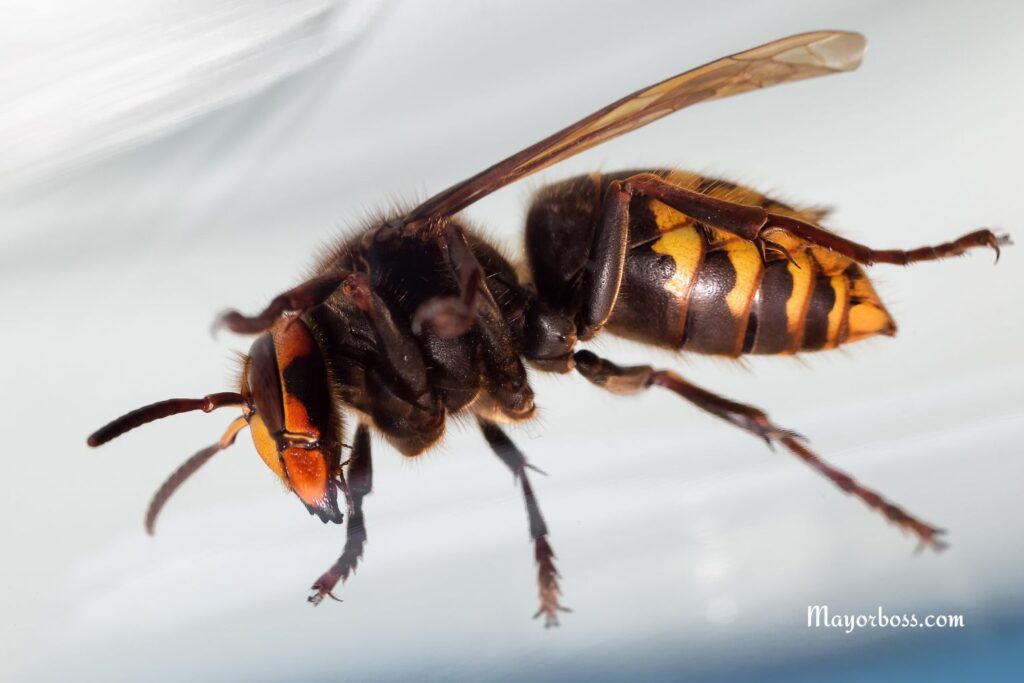
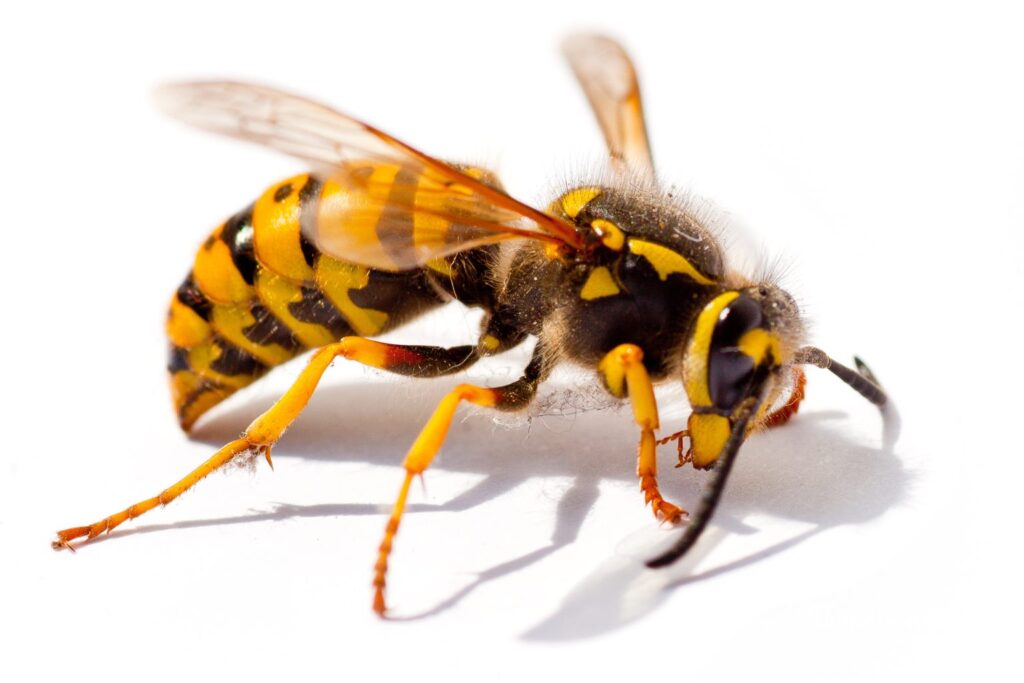
Wasp
Wasps have a slim, smooth body and can be yellow and black or brown and red.
Where They Live:
Wasps build papery nests under eaves, in trees, or in the ground. Hornets often nest high in trees.
How the Sting Feels:
Wasps and hornets can sting more than once. Their stings are usually very painful, causing redness, swelling, and a burning sensation.
What to Do:
Clean the area, use a cold pack, and take an antihistamine if needed. Watch for signs of allergy.
Fire Ants

What They Look Like:
Fire ants are small, reddish-brown ants found mostly in southern regions.
Where They Live:
They build large, sandy mounds in yards, parks, and fields.
How the Bite/Sting Feels:
Fire ant stings start with a sharp pain, followed by itching and burning. Within a few hours, you may see small blisters or pustules.
What to Do:
Wash the area, avoid scratching, and apply an ice pack. If you notice severe swelling or trouble breathing, get medical help right away.
Mosquitoes
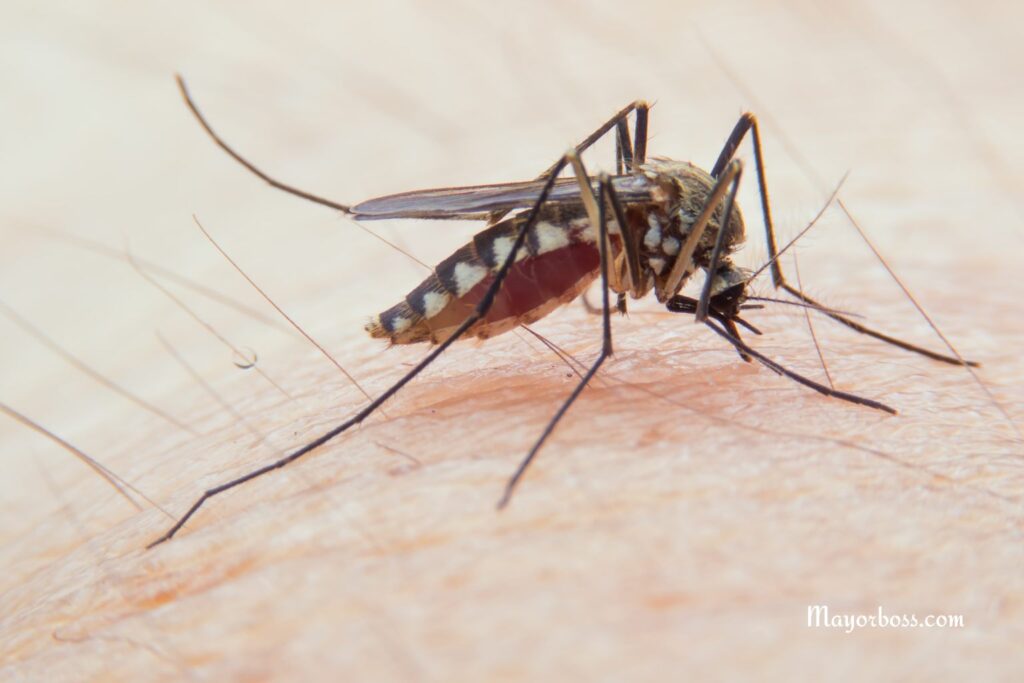
What They Look Like:
Mosquitoes are small, slender, and have long legs with a needle-like mouthpart.
Where They Live:
They thrive near standing water—ponds, puddles, even birdbaths.
How the Bite Feels:
Mosquito bites usually appear as small, itchy, red bumps. Sometimes, the bump can get quite swollen, especially in children.
What to Do:
Clean the area and use anti-itch cream or a cold pack. Try not to scratch to prevent infection.
Fleas
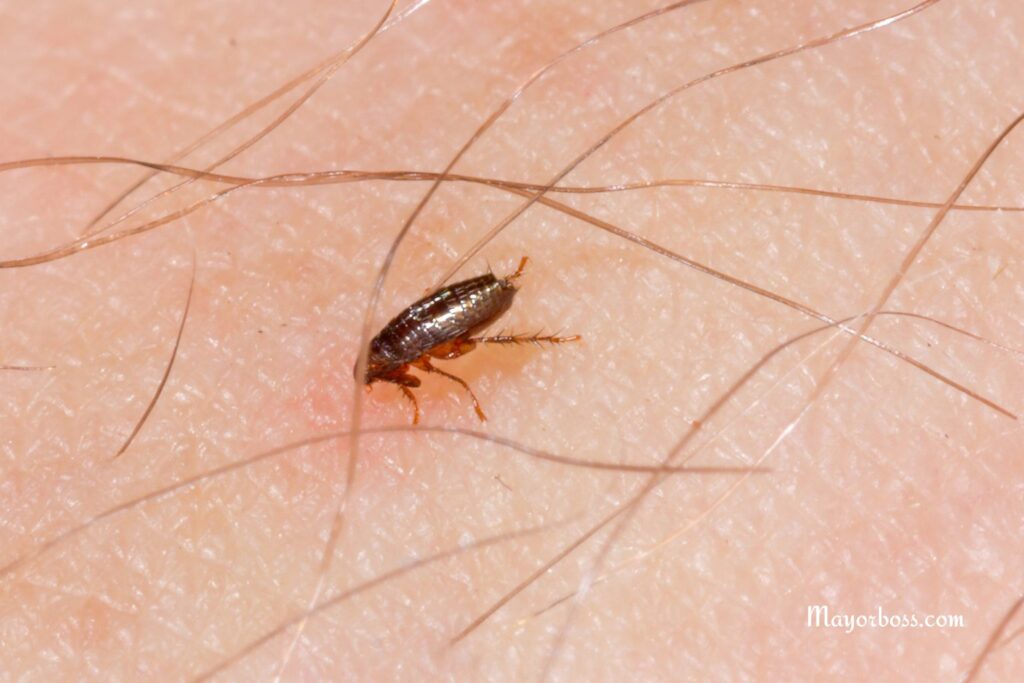
What They Look Like:
Fleas are tiny, dark brown insects that jump, not fly.
Where They Live:
Commonly found on pets and in carpets.
How the Bite Feels:
Flea bites appear as small red dots, often in clusters around the ankles or legs. They are intensely itchy.
What to Do:
Wash the bites, apply anti-itch cream, and treat your home and pets if needed.
Ticks

What They Look Like:
Ticks are small, oval, and flat before feeding. They swell up after attaching.
Where They Live:
In grassy, wooded, or brushy areas.
How the Bite Feels:
Tick bites are usually painless. You may notice a small bump, sometimes with the tick still attached. Watch for a bull’s-eye rash or flu-like symptoms, which can signal Lyme disease.
What to Do:
Remove the tick with tweezers, pulling straight out. Clean the area with soap and water. See your doctor if you notice a rash or feel sick.
Spiders

What They Look Like:
Spiders vary in size and color. Most bites in the home come from harmless spiders.
Where They Live:
They prefer dark, quiet corners indoors and outdoors.
How the Bite Feels:
Most spider bites cause mild pain and redness. Rarely, some (like black widows or brown recluses) can cause severe reactions, such as muscle cramps, fever, or ulcers at the bite site.
What to Do:
Clean the bite, use a cold pack, and monitor for symptoms. Get medical help for severe pain, spreading redness, or if you suspect a dangerous spider.
How to Tell What Bit or Stung You
- Bee or Wasp: Sudden pain, possible stinger, swelling
- Fire Ant: Burning pain, blisters
- Mosquito: Itchy red bump, often at dusk or night
- Flea: Small, itchy clusters, often on ankles
- Tick: Painless, tick often attached, risk of rash later
- Spider: Mild to severe pain, may see fang marks
Pay attention to where you were and what you were doing when it happened. If you see the insect, try to remember its size, color, and shape.
When to Seek Medical Help
Most stings and bites heal on their own. However, get medical help if you experience:
- Difficulty breathing
- Swelling of the face, lips, tongue, or throat
- Dizziness or fainting
- Rapid heartbeat
- Spreading redness, rash, or signs of infection
- Severe pain that does not improve
These could be signs of a severe allergic reaction or infection.
How to Prevent Insect Bites and Stings
- Wear long sleeves and pants when outdoors.
- Use insect repellent with DEET or picaridin.
- Keep food covered at picnics.
- Shake out clothing and shoes before putting them on.
- Check yourself and your children for ticks after spending time in nature.
- Keep pets treated for fleas and ticks.
FAQs
1. How can I tell if I’m having an allergic reaction to a sting or bite?
Look for hives, swelling away from the sting site, trouble breathing, or fainting. These are emergency signs.
2. Can stinging insects transmit diseases?
Ticks and mosquitoes can transmit diseases like Lyme disease or West Nile virus. Bees, wasps, and fire ants do not transmit diseases but can trigger severe allergic reactions.
3. Should I pop the blisters from a fire ant sting?
No, avoid popping them. Breaking the skin increases the risk of infection.
4. How do I remove a tick safely?
Use fine-tipped tweezers, grasp the tick close to your skin, and pull straight out. Clean the area with soap and water.
5. What should I do if I get stung near my eyes or mouth?
Stings near sensitive areas can swell quickly. Seek medical attention to avoid complications.






